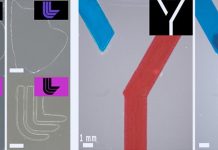
Researchers at Edith Cowan University (ECU) are developing an innovative technology that uses camera footage to detect if a driver is drunk before they start driving.
This new system could help prevent drunk driving and make roads safer.
The ECU team, in collaboration with Mix by Powerfleet, collected data from drivers in a controlled setting.
They recorded videos of drivers at three different levels of alcohol intoxication: sober, slightly drunk, and heavily drunk.
The drivers used a simulator, which allowed the researchers to capture realistic driving behaviors.
The researchers used a machine learning system to analyze standard RGB (red, green, blue) videos of the drivers’ faces.
This system looked for specific signs of alcohol impairment, such as facial features, gaze direction, and head position.
The results were impressive, with the system accurately detecting different levels of intoxication 75% of the time.
Ph.D. student Ensiyeh Keshtkaran explained that this system could be used not only in vehicles equipped with driver monitoring systems but also in smartphones.
This means it could prevent drunk drivers from even starting their journey. Unlike other methods that require observing driving behavior over time, this system can identify impairment right from the start.
Dr. Syed Zulqarnain Gilani, a senior lecturer at ECU, highlighted that this is the first technology to use a simple RGB camera to detect alcohol levels based on facial cues. The next step is to determine the necessary image resolution for this technology. If low-resolution videos are sufficient, it could be used in roadside surveillance cameras. Law enforcement could then use this technology to identify drunk drivers before they become a hazard on the road.
The technology could be integrated into road cameras, similar to how they currently detect seatbelt usage or mobile phone activity. This means it could be applied to various vehicle types without needing special in-cabin equipment.
The system also includes 3D and infrared videos of the driver’s face, rearview RGB videos showing driver posture and steering interactions, driving simulation event logs, and screen recordings of driving behavior.
Dr. Gilani mentioned that this dataset not only supports their research but also provides a valuable resource for the broader scientific community to explore and study further.
This groundbreaking technology promises to make our roads safer by preventing drunk driving through early detection and intervention.


